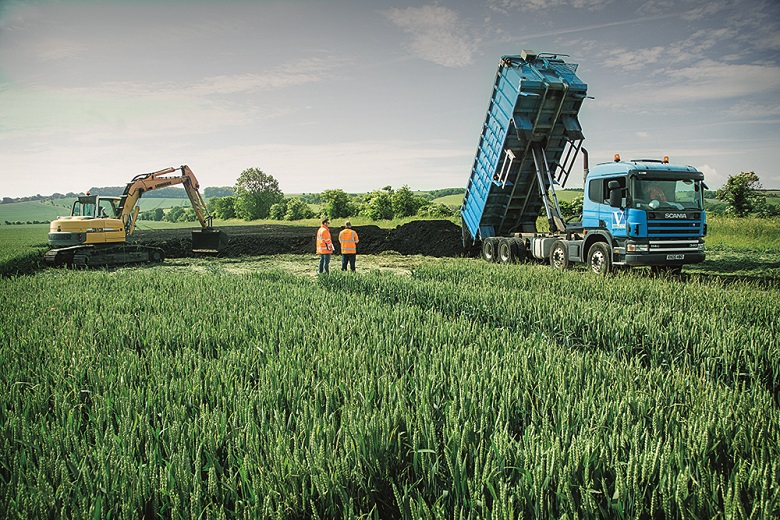Managing sewage sludge
Sewage sludge, being mainly an energy-rich organic material, is a valuable by-product of the wastewater treatment process.
We treat sludge to a high standard with the vast majority treated through anaerobic digestion. This generates a high-methane content biogas that can be used as fuel in our combined heat and power (CHP) engines. This generates renewable energy that is then used to run our largest sites.
How we use sewage sludge
Some of our sludge is used in incineration with energy recovery at our Beckton and Crossness treatment works in London. We put 100% of our sludge to beneficial re-use, mainly through recycling to agriculture as a nutrient-rich fertiliser or for use in land restoration projects as a bulk soil improver. Where we can, we also recycle the resulting ash from our incineration process.
The recycling of treated sewage sludge (known as ‘biosolids’) to agriculture is carried out under strict regulations by which we've consistently maintained our 100% compliance.
This includes the ‘Safe Sludge Matrix’, an agreement between water companies and the British Retail Consortium. The agreement sets out standards for the application of biosolids to crops and strict controls on the quality.
We must ensure we continue to manage sewage sludge in a safe, sustainable and beneficial way. To achieve this, we're continuing to implement a strategy that makes the best use of our sludge. This strategy considers issues of acceptability, energy, transport, odour, nutrients, local constraints and innovative uses in the future.

ThamesGrow
Find out more about our ThamesGrow range of biosolid products. These are generated from the wastewater/sewage treatment process from our 365 sewage treatment works and 32 sludge treatment centres.
Bioresources RCV allocation
- Bioresources market information 2024-25xlsx | 257.9 KB
- Bioresources RCV Allocation Summarypdf | 47.4 KB
- Bioresources market information 2023-24xlsx | 256.8 KB
- Bioresources market information 2022-23xlsx | 495.9 KB
- Bioresources bid assessment frameworkpdf | 577.2 KB
- Bioresources market information 2021-22xlsx | 495.6 KB
- Restated - Bioresources market information tables 2020-21xlsx | 472.1 KB
- Bioresources market information tables 2020-21xlsx | 494.3 KB
- Bioresources market information 2019-20pdf | 299.6 KB
- Bioresources market information tables 2019-20xlsx | 224.3 KB
- Bioresources market information 2018-19pdf | 310.1 KB
- Bioresources market information tables 2018-19xls | 229.6 KB
- Bioresources market information 2017-18pdf | 524.9 KB
- Bioresources market information tables 2017-18xls | 240.6 KB